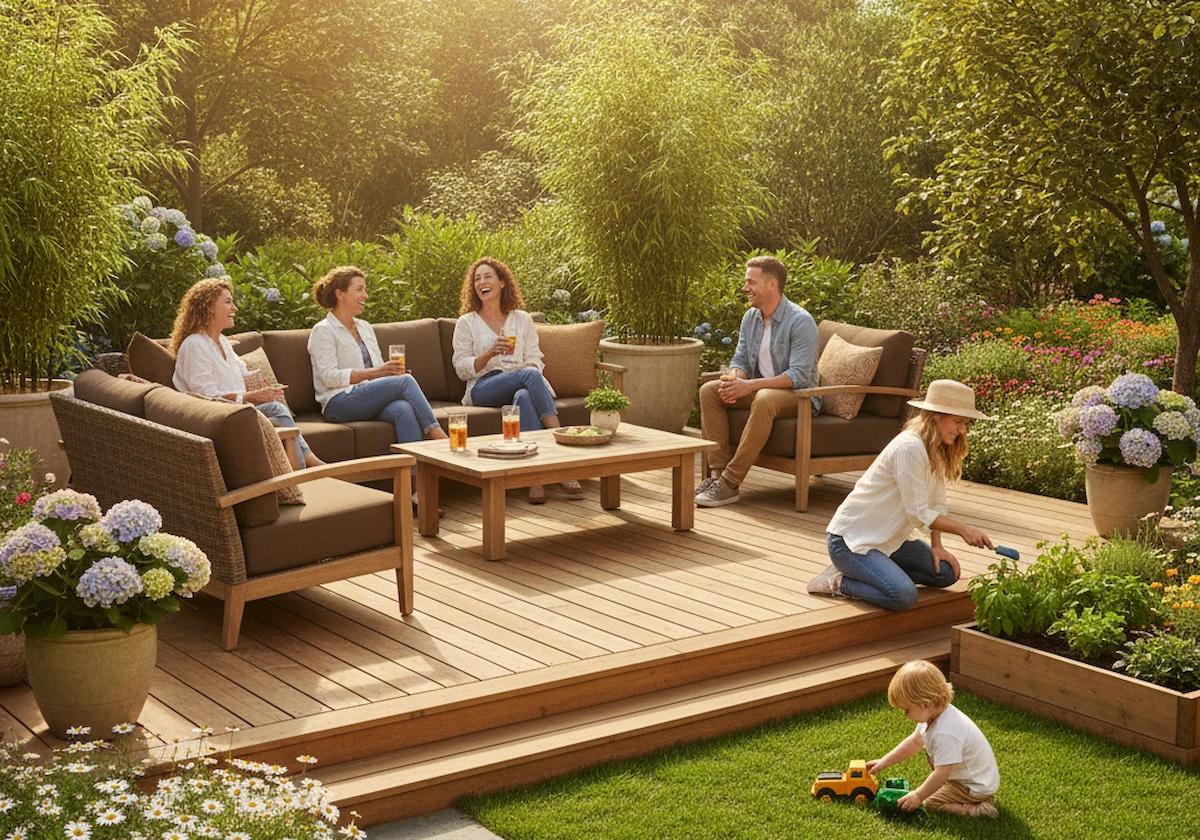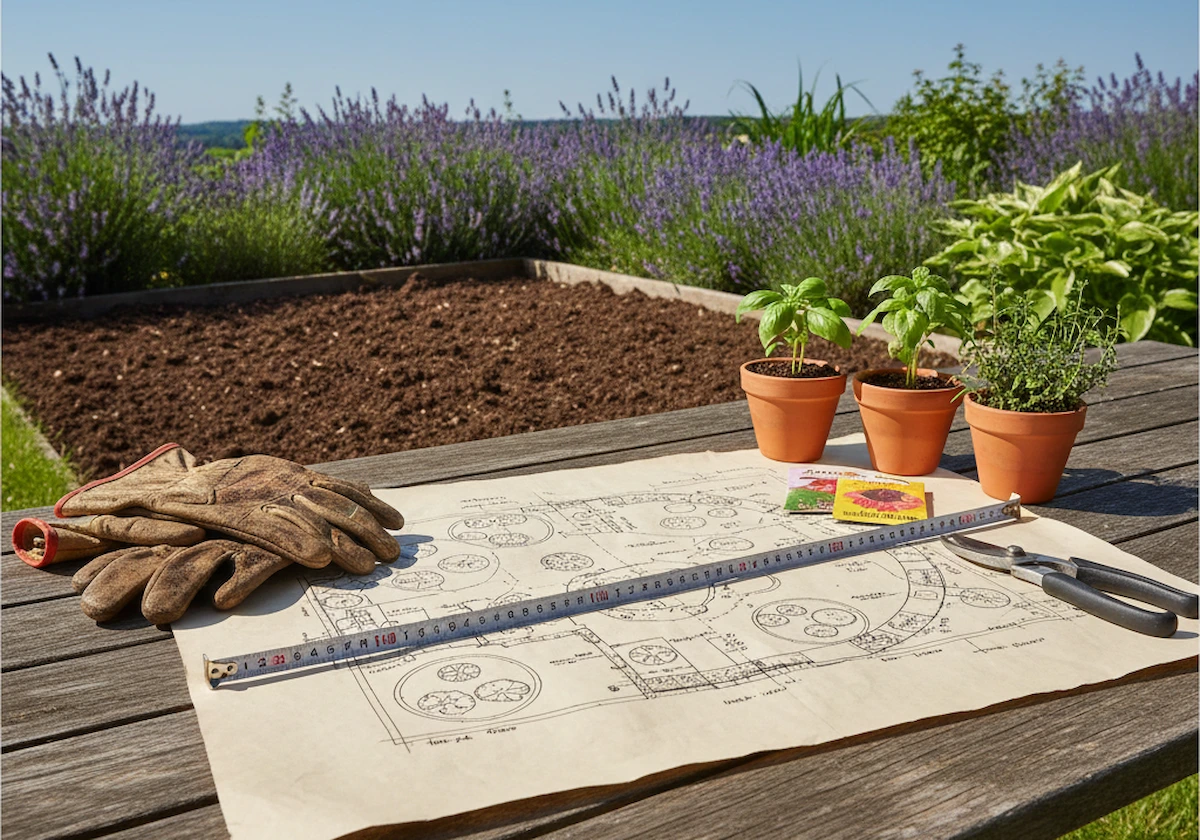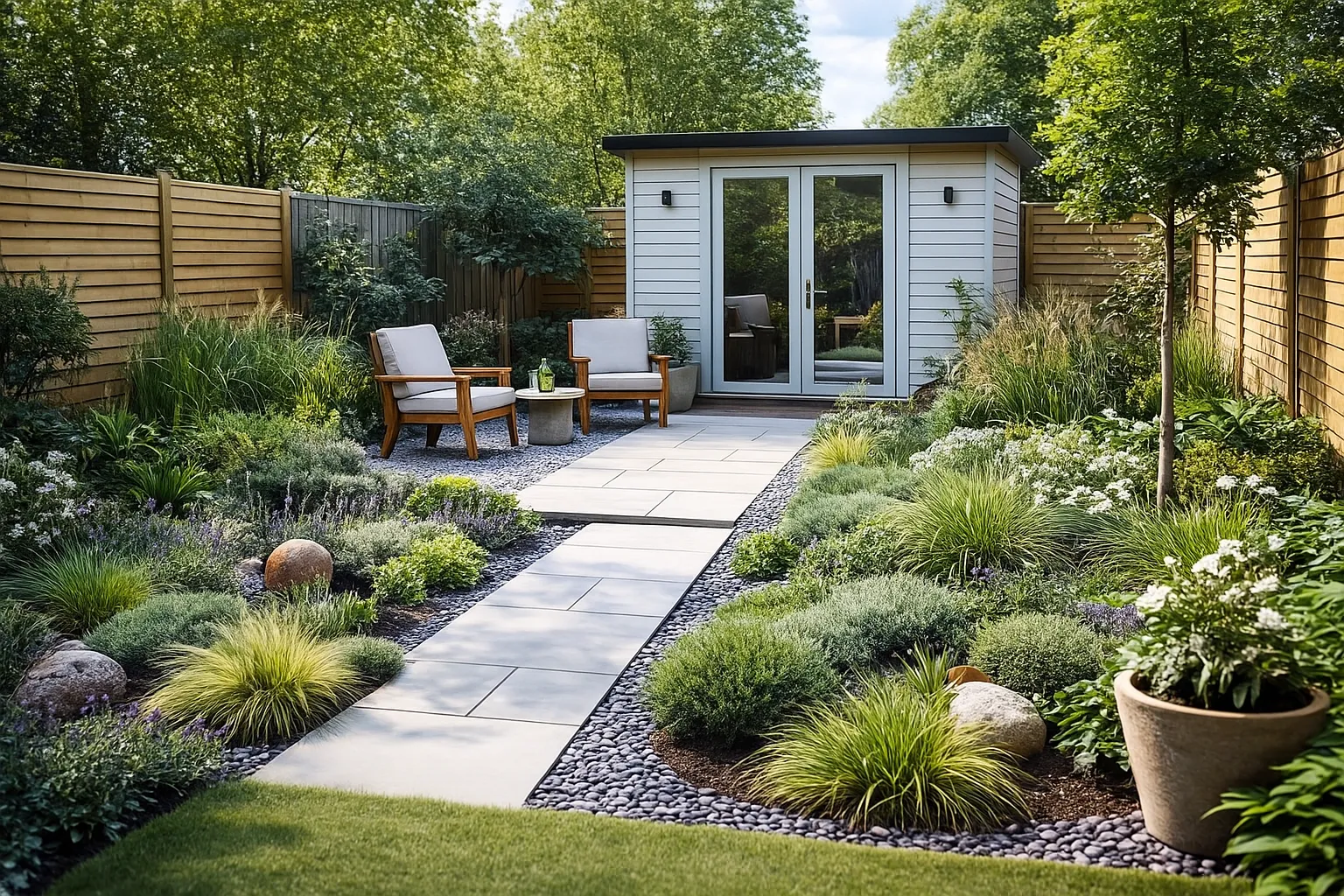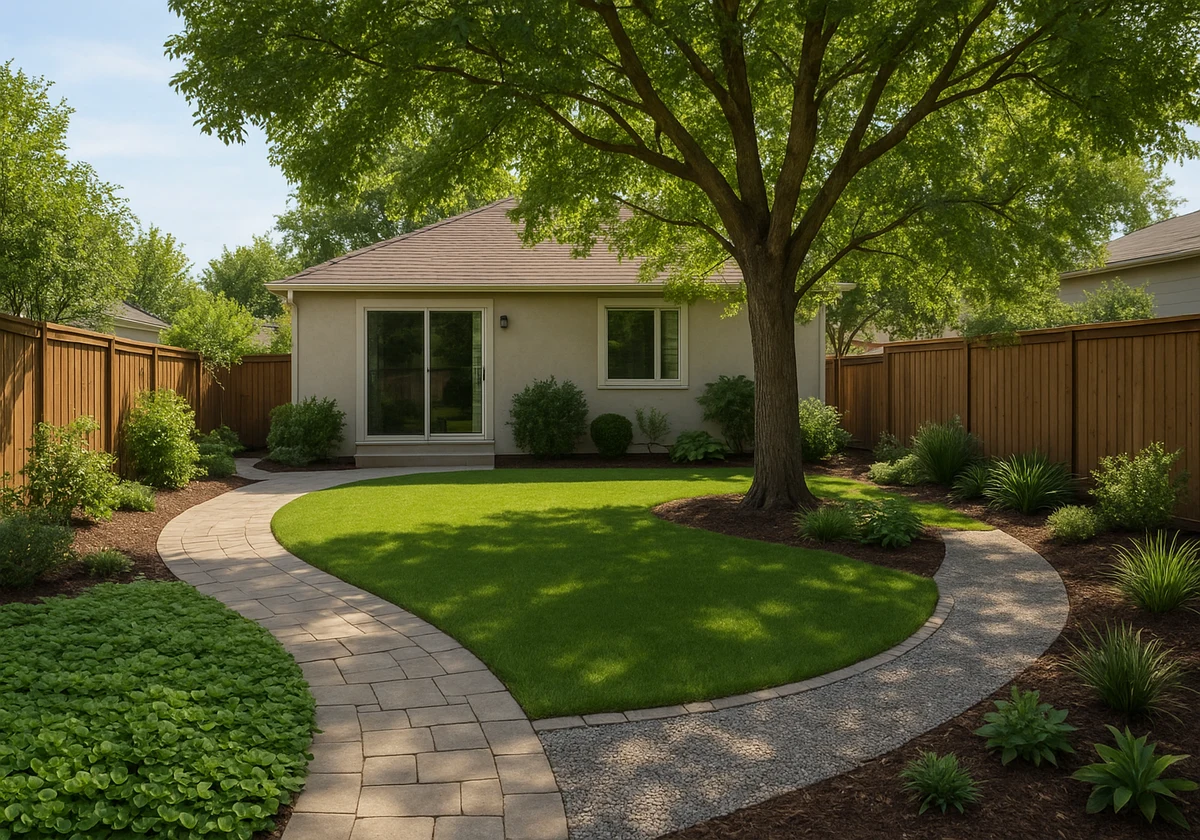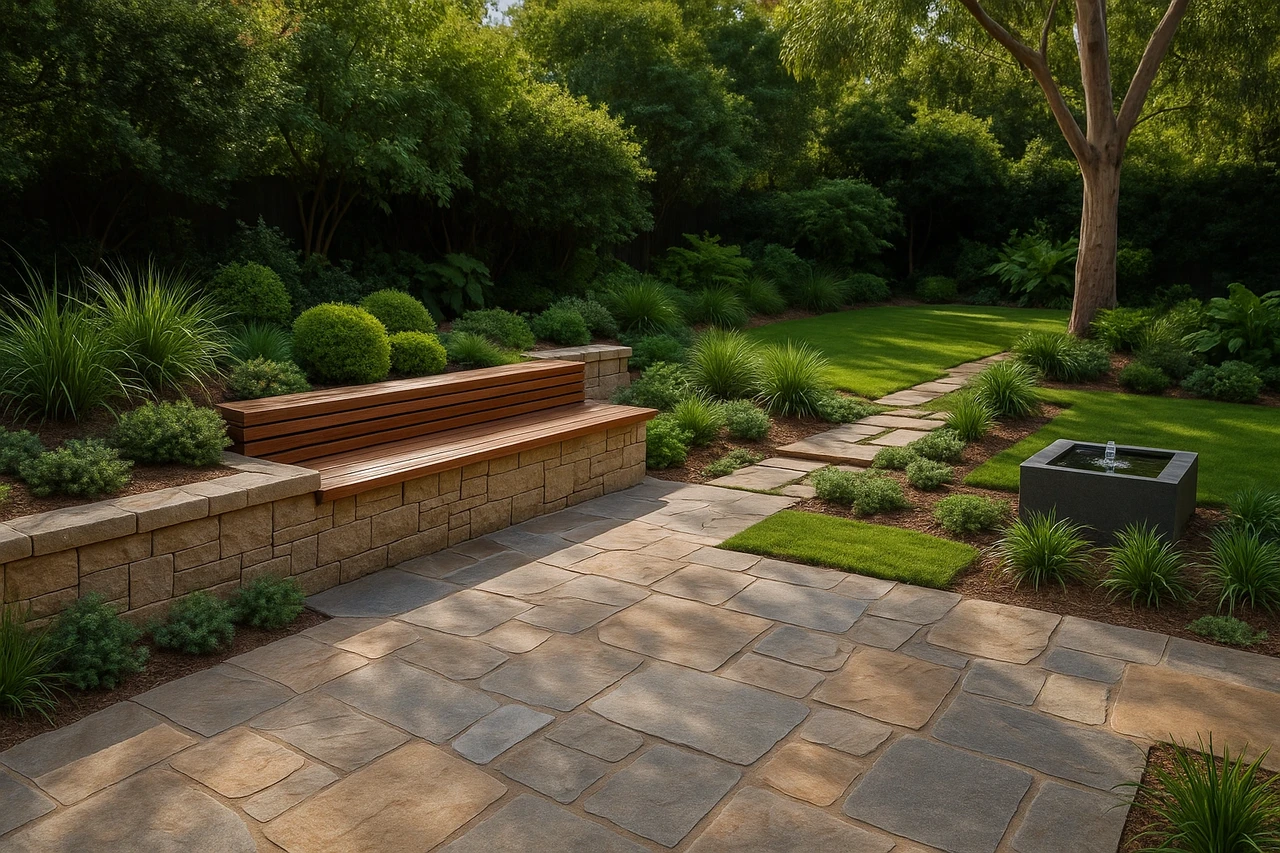Have you ever walked past a beautifully designed flower garden and wished it could also put fresh food on your table? Similarly, most homeowners feel torn between creating stunning outdoor spaces and growing their own produce. But what if you didn’t have to choose? The answer is simple: edible landscaping gives you both beauty and bounty.
Here’s what we’ll cover:
- Which plants look stunning while producing real harvests
- Design principles that work with Australian conditions
- Steps to create your own productive paradise
From helping Melbourne homeowners, we’ve seen that the right approach turns ordinary garden spaces into productive, stunning landscapes.
Enough with the small talk. It’s time to create a space that feeds both your family and your love of beautiful gardens.
Foundation Planning for Your Edible Paradise
Before you start digging or planting anything, let’s walk through the planning basics that’ll set your existing landscape up for success. You’ll learn to assess your space, apply simple design principles, and handle front yard challenges.
Reading Your Space Like a Pro
The first step is understanding your unique conditions. We suggest you spend a week observing how sunlight moves across your space throughout the day. As you watch, note which areas get full sun (6 hours), partial shade, or stay mostly shaded.
Once you know your sun patterns, you can match plants to the right spots. To grow vegetables, you need at least six hours of direct sunlight, while leafy greens can handle less.
Don’t forget to check your soil type, too. Not sure how to? It’s simple: grab a handful after it rains to see if it drains well or stays soggy.
Working with Nature’s Blueprint
You might not be familiar with permaculture principles, but they are the best guide for your design decisions. The basic idea is working with natural patterns instead of against them.
For example, taller plants like fruit trees should go on the south side so they won’t shade shorter crops. Following this logic, group plants with similar water needs together.
Many follow this strategy because it saves time and creates healthier growing conditions for everything in your garden.
Balancing Beauty with Bounty
We all want our garden to look good from the places we see it most. By places, we mean the views from your windows and main pathways. We recommend that when you plan your layout, you consider the position of your most attractive edible plants.
For example, Swiss chard with its colourful stems makes a gorgeous border plant. Similarly, runner beans climbing up attractive supports become living sculptures in your space.
Front Yard Considerations
Oh, we are not done yet. Your edible front yard faces different challenges than a backyard space. You practically have to consider your neighbours, council regulations, and street appeal. The good news is that many edible plants look more attractive than traditional lawn areas.
Now that you’ve got your planning foundation sorted, let’s look at which plants will give you a significant impact.
Champion Plants That Look as Good as They Taste
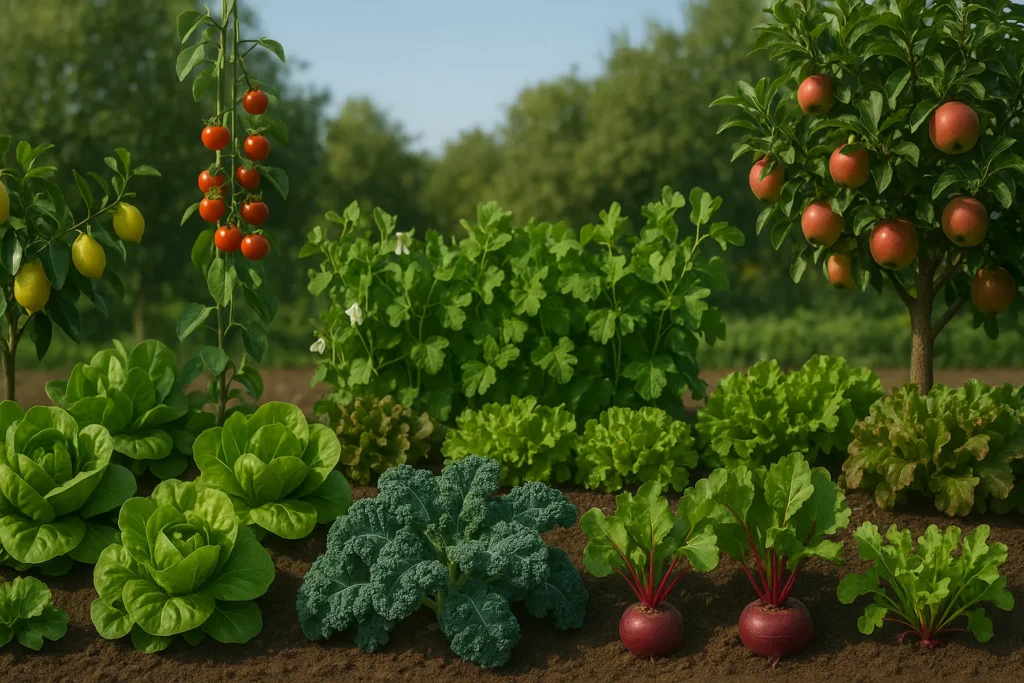
You might be wondering which plant will have the most visual impact while filling your kitchen with fresh produce. Our team has listed the champion plants into the following categories: living sculptures, show-stopping vegetables, year-round leafy stars, and hidden beauties. Let’s examine them further:
- Living Sculptures: Lemon trees, apple trees, and citrus varieties create beautiful focal points and provide structure, seasonal flowers, and obviously, delicious fruit. Many gardeners suggest planting them where they’ll get full sun and become the anchors of your design. For smaller spaces, dwarf varieties work perfectly and can even flourish in large containers.
- Show-Stopping Vegetables: Have cherry tomatoes cascading from hanging baskets ever caught your eye? They look stunning and produce loads of fruit throughout the growing season. Meanwhile, kale comes in gorgeous purple and green varieties that rival any ornamental plant for visual appeal. Swiss chard also helps create natural artwork in your beds with its bright red, yellow, and white stems.
- Year-Round Leafy Stars: Lettuce varieties like oak leaf and butter lettuce create soft, flowing textures in garden beds. For vertical interest, snow peas climbing up trellises add height while producing crisp pods you can harvest regularly. Between these larger features, salad leaves can fill empty spaces and provide continuous harvests when you plant them in succession.
- Hidden Beauties: Don’t overlook what grows below ground. Beetroot produces gorgeous leafy tops that you can harvest for salads while the roots develop underground. The same goes for radishes, which grow quickly, and their leaves add a peppery flavour to your meals. These crops give you double the value from the same space.
Now that you know which plants pack the most visual punch, it’s time to give them proper homes. You can’t plant them randomly if you want the best results. These plants will flourish when you build the right foundation for them to grow in.
Building Your Edible Framework
The structure you create determines how well your edible plants perform and how good they look while doing it. When you get your beds and supports right from the start, you’ll save yourself problems later and give your plants the best chance to thrive.
For most edible landscaping, raised garden beds offer the perfect solution. Raised beds provide better drainage than ground-level planting and let you control your soil conditions. The ideal height is 20-30cm for growing vegetables and herbs, though you can go higher if you want easier access.
Meanwhile, vertical growing is where things get really interesting for smaller spaces. For instance, snow peas and runner beans naturally climb and can cover ugly fences. The important thing is installing sturdy trellises or wire supports before planting, because these crops get heavy once they’re established. To grow herbs and salad leaves, wall-mounted planter boxes work well and keep them within arm’s reach.
On the other hand, containers and pots give you flexibility. You can move plants to follow the sun through seasons or protect them from extreme weather. Gardeners usually use large pots for dwarf fruit trees, while on the practical side, smaller containers suit herbs perfectly.
With a solid framework in place, your garden creates the structure it needs to look intentional rather than random.
Seasonal Success Strategies
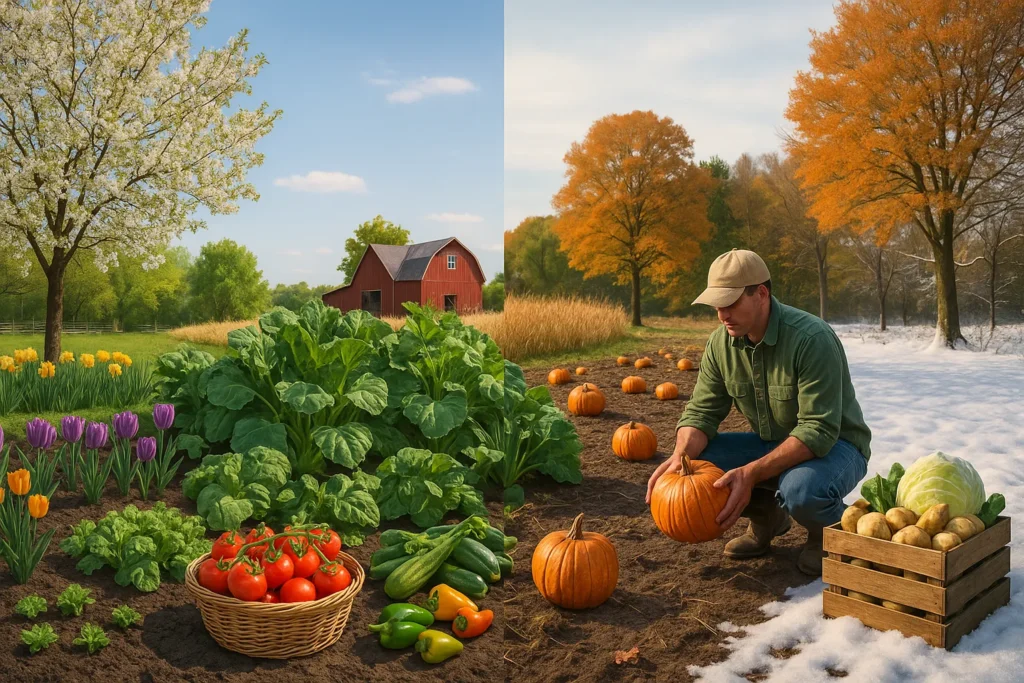
Seasonal success strategies help you maintain continuous harvests while keeping your edible landscape looking beautiful throughout the year. The secret is understanding what to plant when and how to plan for each season’s unique opportunities.
- Spring Setup (September-November): After the last spring frost passes, it’s time to get your warm-season crops started. Plant tomatoes, beans, and summer herbs once soil temperatures warm up. This season is also perfect for establishing new fruit trees and getting compost worked into your garden beds.
- Summer Abundance (December-February): It’s harvest time, so focus on keeping plants well-watered. Cherry tomatoes and herbs produce heavily now, so pick regularly to encourage more growth. Also, establish your autumn vegetable seedlings toward the end of this period.
- Autumn Preparation (March-May): This season offers some of the best growing conditions. Experts usually recommend you plant cool-season crops like kale and root vegetables, which actually taste better after light frosts. It’s also time to prepare beds with organic matter and plan your winter layout.
- Winter Harvests (June-August): Don’t let your vegetable garden ideas go dormant. Leafy greens like lettuce and kale flourish in cooler weather, and many herbs continue producing. Use this quieter time to plan improvements and prepare for the next growing year.
Seasonal planting can do wonders, but companion planting can add another layer of success to it. For example, planting strawberries around fruit trees to create living mulch. Also, herbs like lemon grass help repel pests while adding fragrance to your space.
Keep It Flourishing Without the Hassle
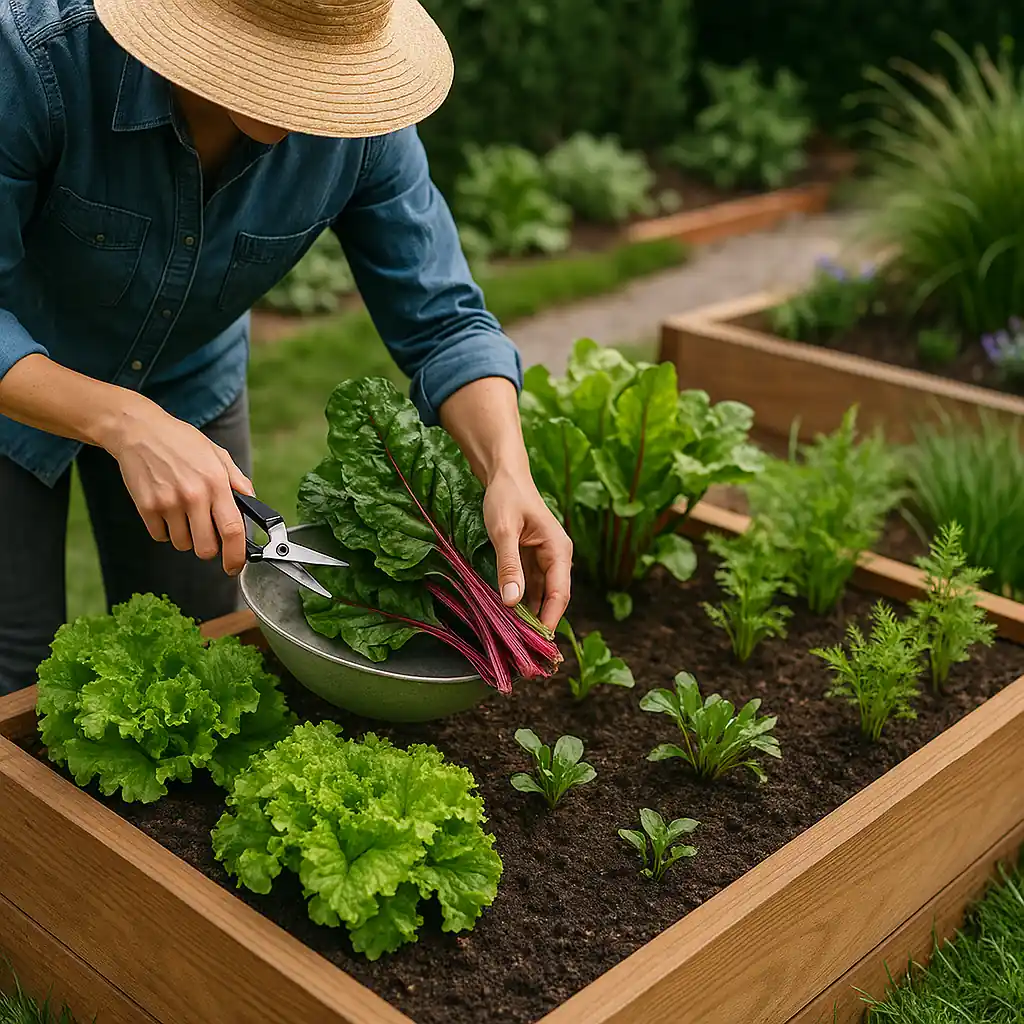
Maintaining your edible garden doesn’t have to become a full-time job if you set up good systems from the start. The right approach keeps your garden productive while preserving the beautiful design you’ve worked to create.
Follow these maintenance tips to keep your garden flourishing:
- Regular Harvesting: Pick vegetables regularly to encourage more production and keep plants looking tidy. The reason is simple: frequent harvesting signals plants to keep producing rather than going to seed. When harvesting leafy vegetables like lettuce and kale, take the outer leaves first and let the centre keep growing. The harvesting method gives you continuous harvests without creating gaps in your design.
- Soil Health First: Your garden’s foundation needs regular feeding with compost around plants twice a year. Once you’ve added compost, mulch garden beds to retain moisture and suppress weeds. The mulching practice reduces the need for frequent watering and fertilising while keeping your plants healthy.
- Right Plants, Right Places: Plants suited to your local conditions require less effort than fighting unsuitable varieties. After choosing appropriate plants, group vegetables with similar water needs together so you can water more efficiently. The grouping strategy saves both time and water while improving plant health.
- Succession Strategies: Small plantings every few weeks work better than one massive planting session. The succession approach works particularly well with quick-growing crops like radishes and salad leaves. The staggered planting schedule means you’ll always have fresh produce ready without overwhelming harvests all at once.
Your beautiful vegetable garden will reward you for years when you give it consistent, simple care rather than sporadic, intensive efforts.
Your Beautiful Food Garden Awaits
Your path to a beautiful, productive garden starts today, and everything you need to know is right here in this guide.
Edible gardens offer rewards that go well past the dinner table. You’ll create outdoor spaces that look amazing while producing fresh, healthy produce for your family. Along with the practical benefits, the satisfaction of harvesting your own vegetables and herbs is something you have to experience to understand.
Working with Australian families, our team at Design Martus saw how these gardens change people’s relationship with their outdoor spaces. Your edible garden project deserves professional guidance, and our experienced team is ready to give you exactly that.
Contact us today to discuss your vision and get started on creating your own food-producing paradise!




